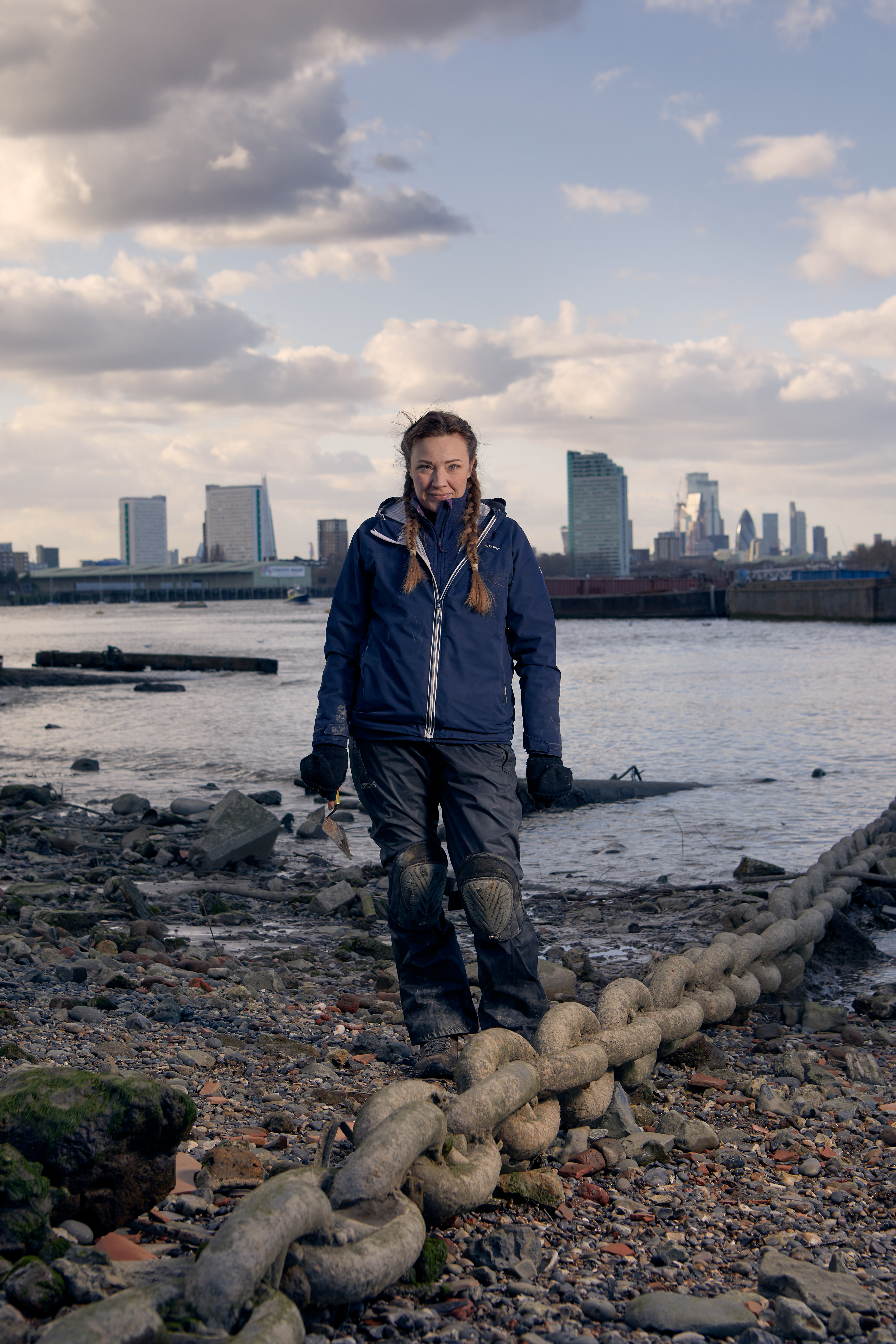I am the Tide Travelling Mudlark, the River Thames is my time machine. I search the river at low tide, bringing to life lost and forgotten stories of the past.
Mudlarking is the name given to the whimsical pastime of searching a tidal riverbed – the foreshore – at low tide, carried out by people like me – a mudlark. In plucking a historic artefact from its foreshore at low tide, I’m almost certainly the first person to touch that object in hundreds, if not thousands, of years. That’s because it’s been cocooned in the anaerobic mud of the River Thames since it was lost to history. Neither archaeologist nor historian, I’m one of the many ordinary people learning as I go, recovering important artefacts and oddities from one of the world’s longest archaeological sites.
Mudlarking is an activity which has exploded in popularity in recent years, with many books, television programmes and yearly live events revolving around mudlarks and the treasures they discover. From significant historic antiquities to unusual, relatively modern items, our finds help us give context to London and global history, to keep weaving together that rich tapestry of people and places who lived, loved, and died in our capital city and beyond.
Searching the River Thames is not a modern phenomenon. From the moment a river exists, it becomes a vault for myriad artefacts of material history. Dredging of the Thames in the 19th century recovered historical artefacts of age and importance, including the Battersea Shield, a Celtic bronze shield currently dated to 350 – 50BC. Searching the River Thames foreshore was not always a leisure pursuit. Mudlarks from the past, on one hand described as cunning criminals, on the other thought of as poor unfortunates, grubbed around in Victorian London, alongside ‘toshers’ – searchers of sewers – to recover items of value to sell for money.
In the mid-19th century, reform advocate Henry Mayhew describes mudlarks as people “compelled from utter destitution to seek for the means of appeasing their hunger in the mud of the river”. Searching the filthy Thames of the 19th century at low tide for bits of old rope, coal, iron or even bones, all items the mudlarks could sell, would have been a miserable occupation. Modern mudlarks are not permitted to sell anything they find, and a permit must be acquired for the right to search the river in any way. Our significant finds are recorded with the British Museum’s ‘Portable Antiquities scheme’ so that a record of what we have found can be accessed by anyone with an interest.
Contact
mail@marielouiseplum.com

Photographer: Tom Harrison
www.tomharrisonphotography.co.uk
© TOM HARRISON